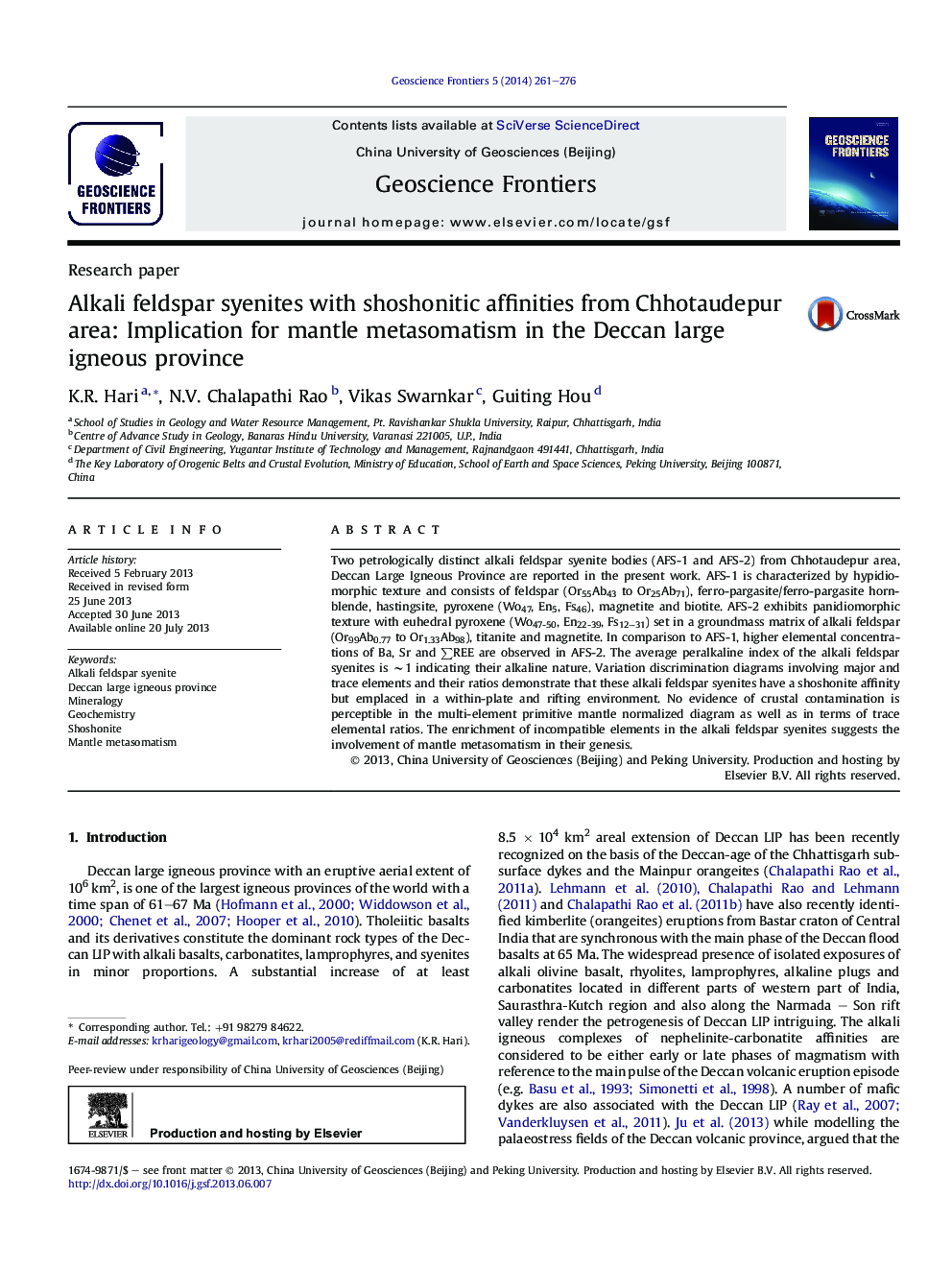| Article ID | Journal | Published Year | Pages | File Type |
|---|---|---|---|---|
| 4681797 | Geoscience Frontiers | 2014 | 16 Pages |
•Petrologically distinct alkali feldspar syenite bodies from Deccan Large Igneous Province.•Shoshonite affinity but emplaced in a within-plate and rifting environment.•Mantle metasomatism through upwelling melts from the Réunion mantle plume.
Two petrologically distinct alkali feldspar syenite bodies (AFS-1 and AFS-2) from Chhotaudepur area, Deccan Large Igneous Province are reported in the present work. AFS-1 is characterized by hypidiomorphic texture and consists of feldspar (Or55Ab43 to Or25Ab71), ferro-pargasite/ferro-pargasite hornblende, hastingsite, pyroxene (Wo47, En5, Fs46), magnetite and biotite. AFS-2 exhibits panidiomorphic texture with euhedral pyroxene (Wo47-50, En22-39, Fs12–31) set in a groundmass matrix of alkali feldspar (Or99Ab0.77 to Or1.33Ab98), titanite and magnetite. In comparison to AFS-1, higher elemental concentrations of Ba, Sr and ∑REE are observed in AFS-2. The average peralkaline index of the alkali feldspar syenites is ∼1 indicating their alkaline nature. Variation discrimination diagrams involving major and trace elements and their ratios demonstrate that these alkali feldspar syenites have a shoshonite affinity but emplaced in a within-plate and rifting environment. No evidence of crustal contamination is perceptible in the multi-element primitive mantle normalized diagram as well as in terms of trace elemental ratios. The enrichment of incompatible elements in the alkali feldspar syenites suggests the involvement of mantle metasomatism in their genesis.
Graphical abstractFigure optionsDownload full-size imageDownload as PowerPoint slide
